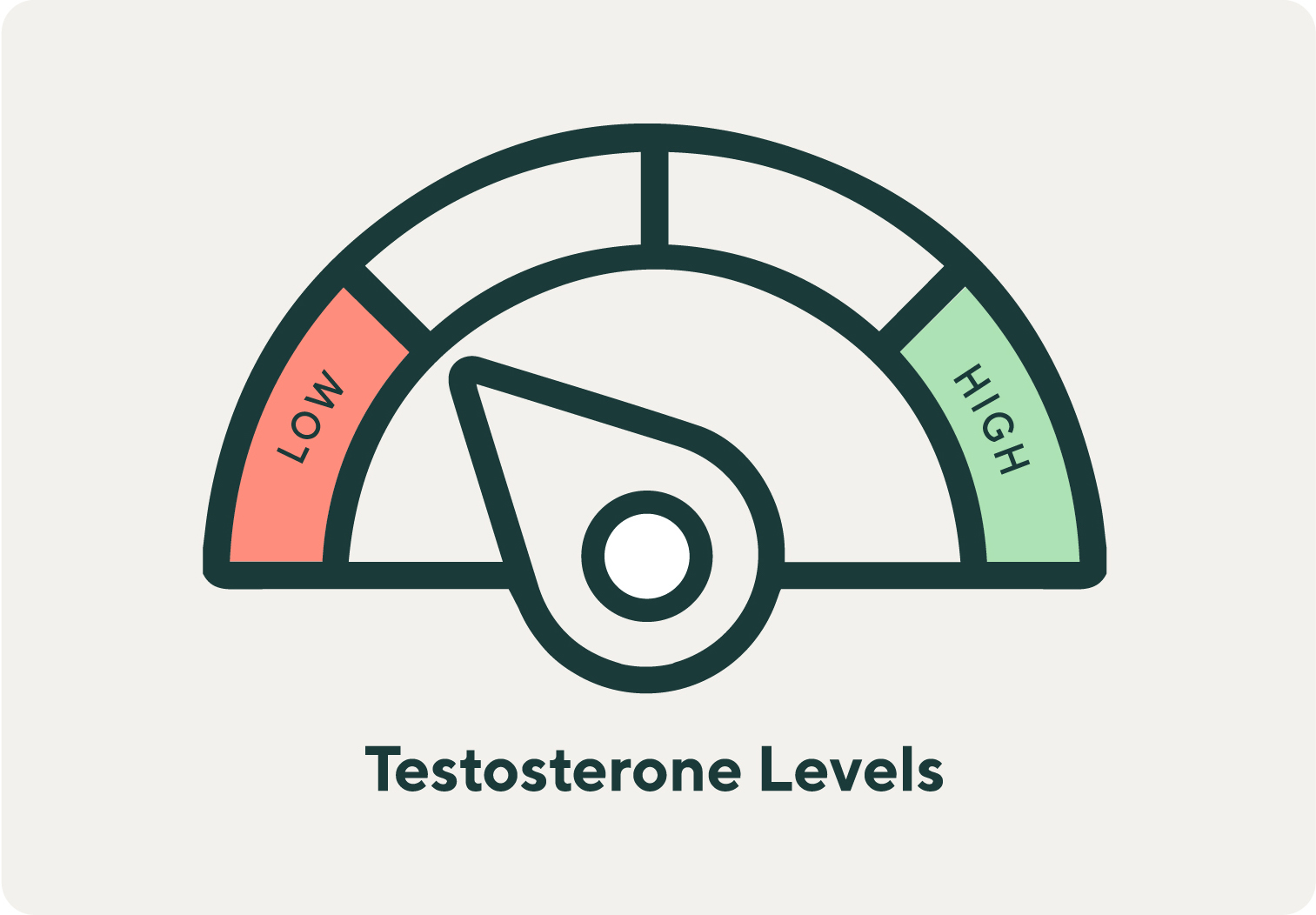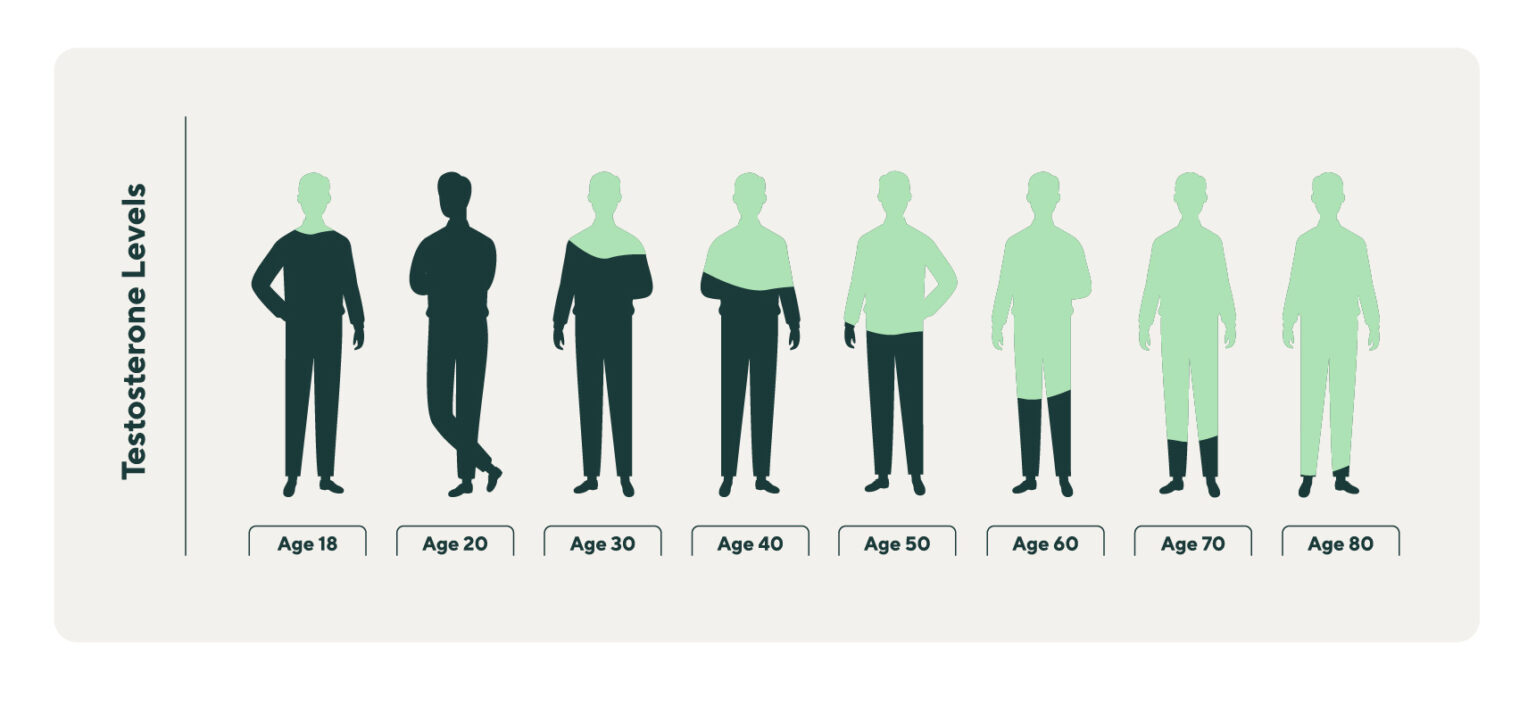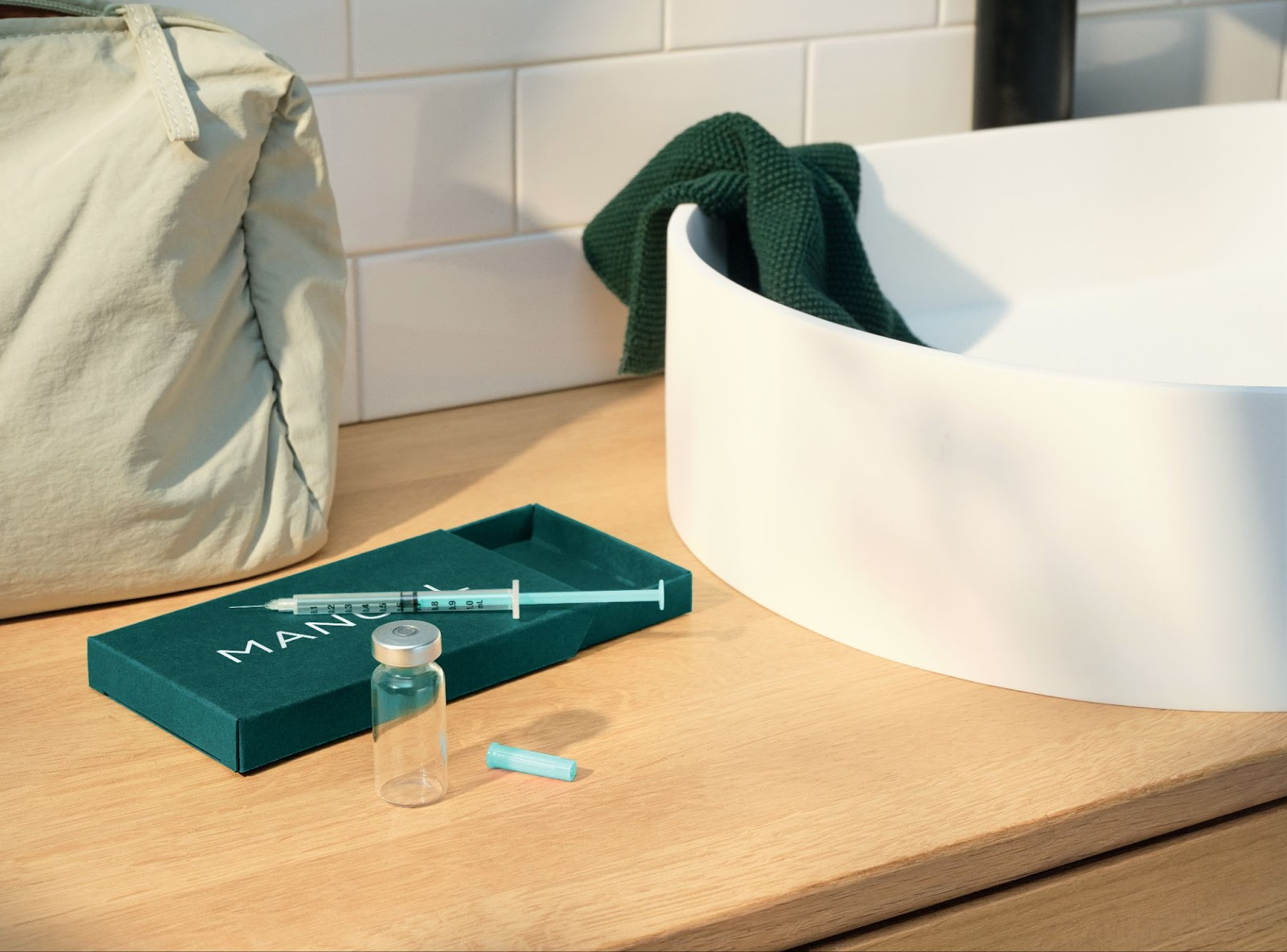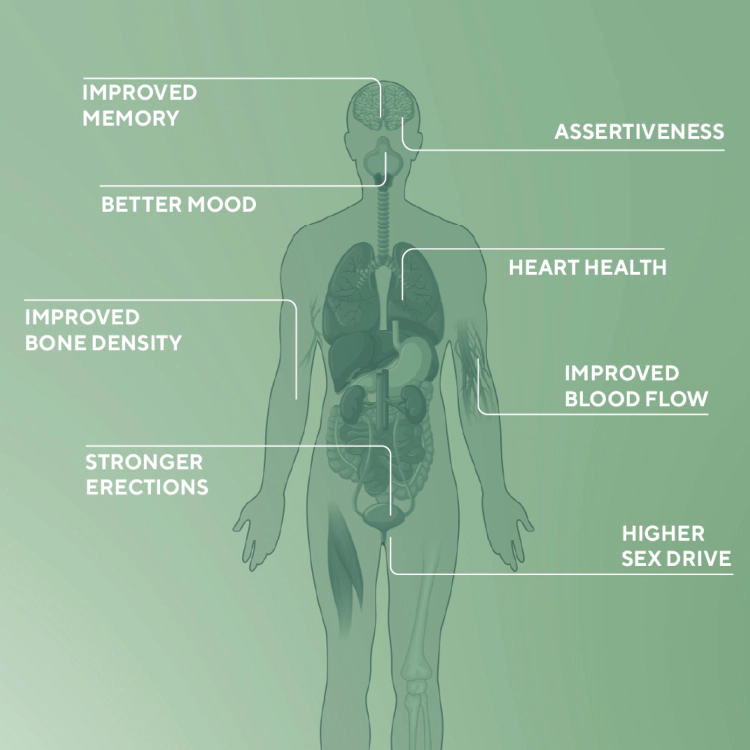What is Testosterone Replacement Therapy?
The aim of Testosterone Replacement Therapy is to restore a person’s testosterone levels to what is considered to be a normal level and counteract any symptoms of low testosterone that they may be experiencing.
Testosterone is a hormone that is primarily produced in the testicles. Testosterone levels fluctuate throughout a man’s lifetime, usually peaking around the age of 18 or 19, before gradually declining at a rate of around 1% per year after the age of 30. Initially, this decline may not cause any noticeable symptoms or problems. However, over time, dropping T levels can cause a range of unpleasant and even debilitating symptoms. When this happens, Testosterone Replacement Therapy may be recommended to counteract these symptoms.
Getting older isn’t the only reason why some men experience low testosterone.
Other causes of low T include:
- Side effects from medications, like chemotherapy
- Injury to the testicles
- Testicular cancer
- Problems with the glands in the brain responsible for hormone production
- Low thyroid function
- Obesity
- Chronic health conditions

What is the normal range for testosterone?
Healthy testosterone levels are considered to fall within the range of 7.6 and 31.4 nmol/L. This refers to the total amount of testosterone in your bloodstream. Sometimes you might see testosterone measures in ng/dL. This is the unit of measurement used in the U.S. but for comparison, normal levels in ng/dL are between 270 and 1070. It’s important to note that some men can start to experience symptoms of low testosterone when their levels fall to just 15 nmol/L, which is technically in the “normal” range. Since every man has different experiences of dropping testosterone, it’s important to assess everyone as an individual..

Who needs Testosterone Replacement Therapy?
Testosterone Replacement Therapy is generally recommended for men who have had a diagnosis of low testosterone accompanied by symptoms of low testosterone, and feel that these symptoms are affecting, or beginning to affect, their quality of life.
Common symptoms of low testosterone include:
- Decreased libido (low sex drive)
- Erectile dysfunction
- Low fertility which could impact your ability to have a child
- Fatigue
- Low mood/depression
- Irritability
- Weight gain
- Decrease in lean muscle mass
- Loss of facial and body hair
- Night sweats
- Short term memory loss
- Insomnia
If you are experiencing any of these symptoms, you should schedule an appointment with your healthcare provider to discuss testosterone level testing – something which can be done with a simple blood test.
The importance of balanced testosterone levels
Testosterone is present in both men and women, but it plays a particularly important role in male development and health. This is because it’s an androgen – a hormone that is responsible for the formation of characteristics that we most often associate with men and male sexual and reproductive function. Examples include, but aren’t limited to:

If the amount of testosterone in your body isn’t at normal levels, it can have some effects that you can see, and some that you can’t. A long-term lack of testosterone can even have some potentially serious effects, such as contributing to bone weakness. This can lead to a condition called osteoporosis where bones are much more likely to break in the event that you experience a fall or crush injury.
Your healthcare provider will be able to tell you more about the effects of long-term testosterone deficiency.
Understanding Testosterone Replacement Therapy in the UK
What is the legal status of Testosterone Replacement Therapy in the UK?
Testosterone Replacement Therapy has been in use as a treatment for testosterone deficiency in the UK for more than 50 years, during which time its safety and efficacy has been confirmed by numerous studies. It is a legal treatment, but it can only be sold with a prescription from a qualified doctor for the purpose of treating the symptoms of hypogonadism. It’s important to be aware that using Testosterone Replacement Therapy specifically for building muscle is strictly prohibited and strongly discouraged by both medical communities and doping agencies.
If, following blood tests and/or other investigations, you are diagnosed with testosterone deficiency, you can then consider Testosterone Replacement Therapy.
Accessing Testosterone Replacement Therapy in the UK
Fortunately, Testosterone Replacement Therapy is widely available in the UK, both from your usual healthcare provider or via a private prescription.
How to get prescribed Testosterone Replacement Therapy in the UK
Before you can be prescribed Testosterone Replacement Therapy in the UK, you’ll first need to have at least 2 separate blood tests carried out on different days. Both of these need to show low testosterone levels. The reason for this is that hormone levels can fluctuate during the course of a day and so multiple tests are needed to confirm a diagnosis of testosterone deficiency.
Where to buy Testosterone Replacement Therapy in the UK
Testosterone Replacement Therapy is available on the NHS, as well as from a private pharmacy. However, the process can take several months or more from the initial consultation to actually starting treatment. For this reason, many men choose to leapfrog waiting times and obtain their TRT privately.
Understanding online options for Testosterone Replacement Therapy in the UK
For many men, buying Testosterone Replacement Therapy online is a lot easier and more convenient that obtaining the medication in person from your GP. Nevertheless, it’s important to know how to buy testosterone online in the UK, otherwise you could end up with poor-quality or even fake medication from one of the many companies operating illegally and selling sub-standard products.
If you want to buy testosterone online in the UK, it’s essential that you choose an online clinic that operates with its own GMC registered doctors. We also recommend that you check:
- Reviews of the clinic online. Only trust a clinic with great feedback.
- The clinic is registered with the Quality Care Commission (CQC).
- The specific knowledge of the clinic. Some online clinics sell a wide range of different medications and don’t specialise in any specific variety. However, choosing an online clinic that specialises in men’s health helps to ensure that you are prescribed the right and best type of Testosterone Replacement Therapy for you.
Testosterone Replacement Therapy: Dosing, side effects and more
There are various forms of Testosterone Replacement Therapy available in the UK, each of which has a different route of administration.

TRT Injections
Injections are one of the most common and popular forms of TRT. They are administered via injection directly into the muscle tissue. Intervals between injections can be as short as every two weeks, or as long as every three months depending on the formulation.
Pro’s
- Fast-acting, with your body able to quickly absorb the testosterone.
- Fewer applications are required compared to other TRT types.
Cons
- Injections can be painful and cause bruising or swelling at the injection site.
- Must be administered by a healthcare professional.
- As many as 5% of the population have a needle phobia!
TRT Oral Medications
Oral medications are a popular treatment choice for men who don’t want to have injections and aren’t keen on topical treatments which can be sticky or irritating to the skin.
Pros
- Non-invasive method of administration.
- Can be taken at home, at a convenient time.
- Easy to incorporate into your daily routine.
Cons
- Frequent doses are required to maintain testosterone levels in the body.
- Metabolising the medication can cause potential liver toxicity and lower the amount of testosterone absorbed by the body.
- Can be easy to forget doses of medication.
TRT Gels/Creams
A topical method of administration makes TRT in the form of gels or creams popular with men who don’t want to have the inconvenience or discomfort of injections, and who prefer not to use oral medications.
Pros
- Non-invasive method of administration.
- Can be applied at home, at a convenient time.
- Provides a steady release of hormones throughout the day.
Cons
- Daily application is required.
- Possible skin irritation, or transfer of the hormone onto furniture or other people, which could affect testosterone levels.
- Can be easy to forget to apply the gel/cream.
TRT Patches
Hormone-release patches are a popular form of TRT and enable hormones to be absorbed into the body via the skin in a similar way to gels/creams. Patches are usually applied to the upper arms, abdomen or thighs.
Pros
- Non-invasive method of administration.
- Can be applied at home, at a convenient time.
- Provides a steady release of hormones throughout the day.
Cons
- Can be visible on the body.
- Possible skin irritation or allergic reaction.
- Must be replaced every 24 hours to maintain consistent hormone release.
TRT Sprays
Nasal sprays work by delivering testosterone directly into the bloodstream via the nasal mucosa (the lining inside your nose).
Pros
- Non-invasive method of administration.
- Quick absorption rate.
- Discreet and can be administered multiple times per day.
Cons
- Limited availability in the UK at the current time.
- Possible nasal irritation or allergic reaction.
TRT Pellets
Although at first glance they look like tablets, implantable TRT pellets are placed under the skin and release regular amounts of testosterone automatically into the body.
Pros
- Steady hormone release over several months.
- No need to remember daily doses.
- An effective, long-term solution.
Cons
- Requires a minor surgery to implant the pellet. Usually one pellet is implanted every 3 to 6 months.
- Slight risk of infection at the implantation site.
- Further incisions are needed to remove the pellet if any adverse effects experienced or dosing needs to be altered.
Cost of Testosterone Replacement Therapy
So, what can you expect to pay for Testosterone Replacement Therapy and is there any way of getting it without charge?

Average cost of Testosterone Replacement Therapy in the UK
The cost of TRT in the UK varies depending on the type of medication used. However, prices typically start from around £80 per month for TRT ordered online using a private prescription. Before this, you will need to have a consultation and the initial two blood tests required to confirm a diagnosis of testosterone deficiency. This will usually incur an additional fee to the monthly cost associated with your medication. However, with many people facing difficulties accessing GP appointments and NHS waiting times often being long, many men decide that choosing to get TRT online in the UK is a much better option.
Factors influencing the cost of Testosterone Replacement Therapy
The cost of Testosterone Replacement Therapy can vary considerably based on several different factors. The first is your age. This is because your age can affect how low your testosterone is (and so what dosage you will need to bring it up to healthy levels) as well as how often you will need to have your chosen method of TRT administered. The cost of your treatment may also vary based on whether you need any supplementary therapies.
The type of Testosterone Replacement Therapy you choose will affect the cost of your treatment too. Typically, synthetic testosterone which is used in testosterone injections is more expensive than natural testosterone supplements, which are taken orally or applied topically.
Insurance coverage and NHS support for Testosterone Replacement Therapy
As we know, although Testosterone Replacement Therapy is available on the NHS, the process of actually receiving treatment can be difficulty and lengthy. If you have private health insurance, you may be able to access Testosterone Replacement Therapy through this. However, you would need to check your individual policy with your health insurance provider. Alternatively, you can pay for treatment out of pocket.
Weighing the risks and benefits of Testosterone Replacement Therapy
As with any medication, there are both advantages and disadvantages of Testosterone Replacement Therapy. Your chosen TRT provider should be able to give you enough information to make an informed decision about your treatment, but in the meantime, we’ve included an overview of the potential benefits and side effects/risks associated with Testosterone Replacement Therapy.
Potential benefits of Testosterone Replacement Therapy
Testosterone Replacement Therapy might not be able to literally turn back the clock on the ageing process, but it can restore many elements of your life that make you feel younger, stronger and happier again.
Key benefits include:
- Improved memory
- More energy
- Higher sex drive
- Better mood
- Stronger erections
- Improved bone density
- Better heart health
- Easier to maintain muscle mass
- Reduce body/facial hair loss

Potential Risks and Side Effects of Testosterone Replacement Therapy
Testosterone Replacement Therapy is considered to be completely safe, provided you are treated by healthcare professionals who regularly monitor your treatment and your testosterone levels. Nevertheless, as with any medication, there are side effects associated with Testosterone Replacement Therapy. Most side effects can be controlled with careful dosing and monitoring, and people’s experiences of them can vary considerably.
Minor side effects include but aren’t limited to fluid retention, increased urination and acne. More severe potential side effects are rarer but include gynecomastia (growth of male breast tissue), increased cholesterol, decreased sperm count, worsening sleep apnoea.
Some earlier studies suggested that testosterone injections can increased your risk of certain health problems including blood clots, stroke, heart attack and enlarged prostate. However, more recent research suggests that there is no evidence to suggest that short to medium term use of TRT increases cardiovascular risk.
What do I do if I miss a dose of Testosterone Replacement Therapy?
If you miss a dose of your TRT, take it as soon as you can. However, if it’s nearly time for your next dose, take only that dose. Do not take double or extra doses. If you have any concerns, speak to your TRT provider.
What to do if you experience severe side effects
Severe side effects/reactions to Testosterone Replacement Therapy are rare. However, if you do experience any of the following, contact your doctor immediately.

Frequently Asked Questions about Testosterone Replacement Therapy
Still got questions about Testosterone Replacement Therapy? Find the most commonly asked questions and their answers below.
- Is Testosterone Replacement Therapy safe?
When Testosterone Replacement Therapy is administered under professional medical supervision by a licenced healthcare provider, TRT is considered a very safe, effective treatment for testosterone deficiency. Not only will you be properly assessed before your TRT is prescribed, but your healthcare provider should also undertake regular reviews with you to monitor the effectiveness of your treatment, as well as any side effects that you may experience.
- Can I buy Testosterone Replacement Therapy online in the UK?
Yes. Many people choose the convenience of buying Testosterone Replacement Therapy online in the UK. However, it’s essential that you only buy TRT online from a reputable, registered provider who will:
- Perform at least 2 blood tests to confirm a diagnosis of testosterone deficiency
- Have a comprehensive consultation appointment with you to ensure that TRT is the right treatment for you
- Explain the different types of TRT and help you to make an informed decision about your treatment
- Include regular monitoring in your treatment plan
Do not trust Testosterone Replacement Therapy products that are sold online unless the prescription is provided by a GMC-registered doctor.
- What is the cost of Testosterone Replacement Therapy in the UK without insurance?
The cost you will pay for Testosterone Replacement Therapy without insurance will vary depending on your provider and the type and dose of medication you choose. Prices typically start at around £80 per month, with consultations costing anywhere from £100 to £300 or more.
- How long does it take for Testosterone Replacement Therapy to work?
Again, the answer to this question depends heavily on the type of Testosterone Replacement Therapy that you choose. Many men start to notice the positive effects of TRT as early as 3 to 6 weeks after starting treatment. However, optimal results usually start to become evident between 12 and 16 weeks. If you aren’t getting the results from you TRT that you were hoping for, speak to your medication provider.
- Can Testosterone Replacement Therapy treat erectile dysfunction?

If you are suffering from erectile dysfunction (ED), Testosterone Replacement Therapy could help restore your ability to get and sustain an erection for successful sexual intercourse. TRT could also increase your sex drive. However, low testosterone alone is unlikely to be the primary cause of your erectile dysfunction and we would recommend that you speak to your doctor for further assessment.
- Low long do I have to take Testosterone Replacement Therapy?
Testosterone Replacement Therapy doesn’t treat the cause of low testosterone, it only restores your testosterone to healthy levels. This means that many men are on TRT long-term to prevent their symptoms from returning.
- Am I too old for Testosterone Replacement Therapy?
There’s no upper age limit on TRT, and men of all ages could benefit from the treatment. You can discuss any concerns about your age with your chosen provider.




